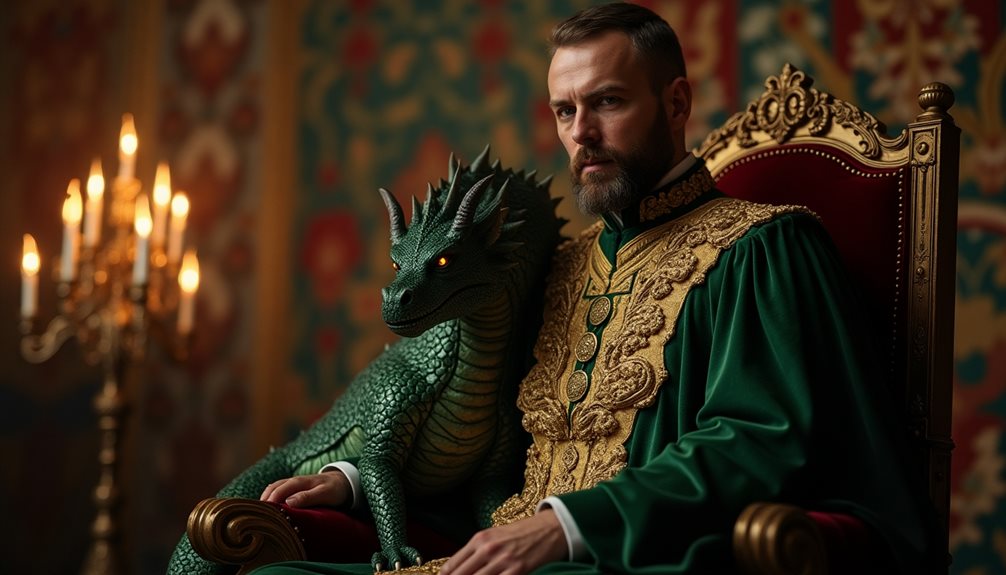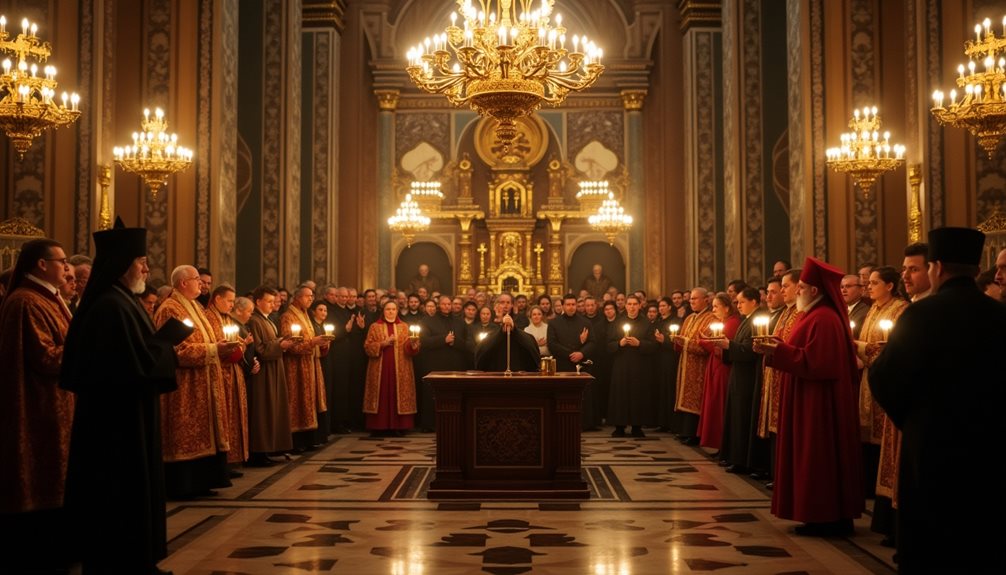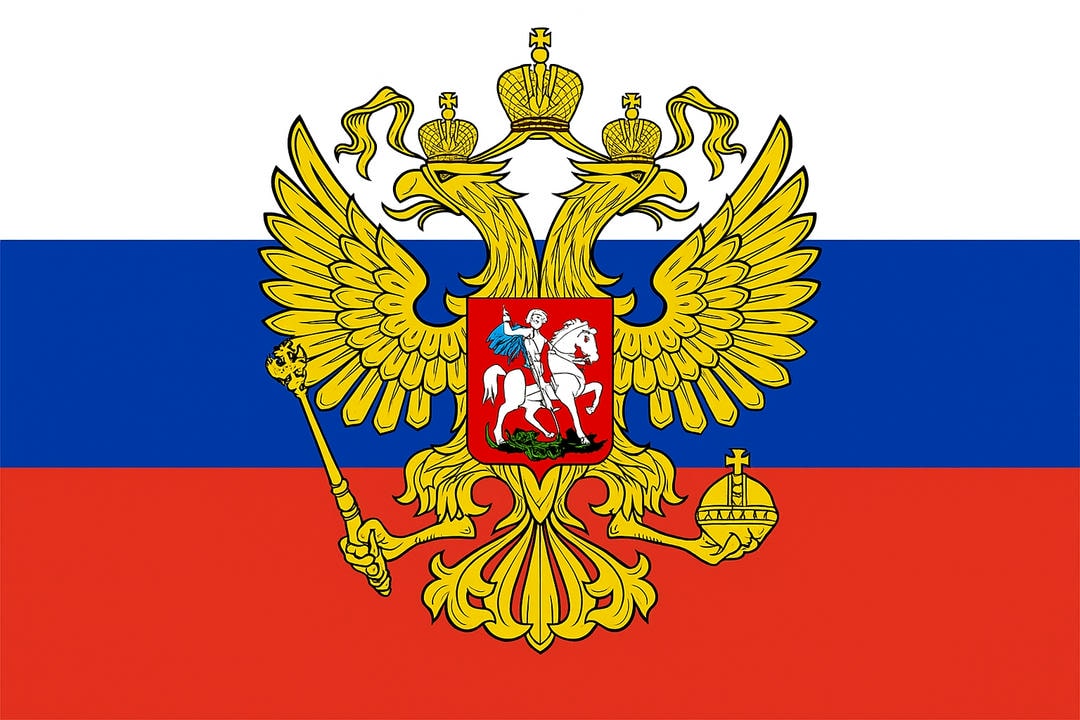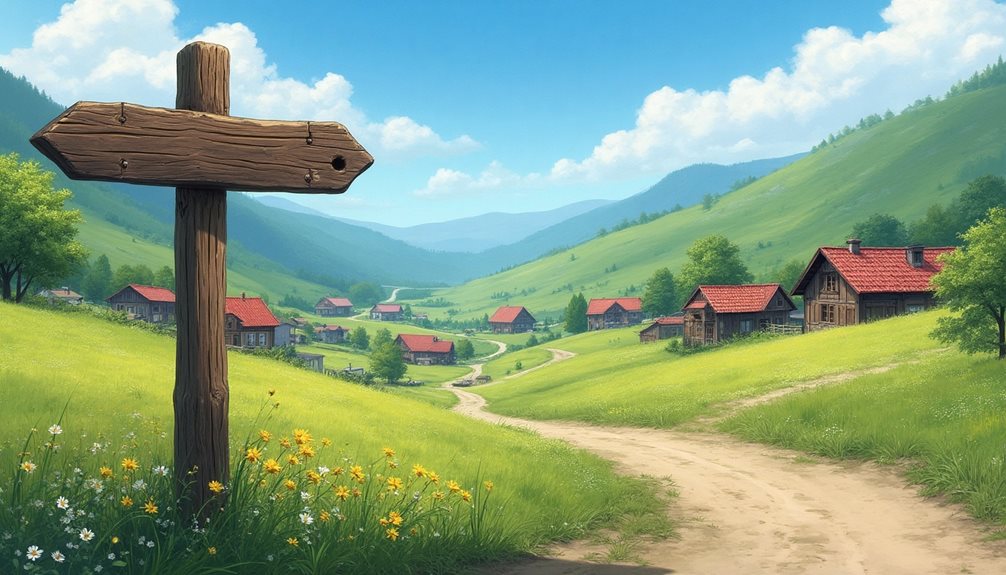When you think about the Russian folktale of Baba Yaga, you’re stepping into a world where the line between good and evil blurs. Living in a peculiar hut perched on chicken legs, Baba Yaga isn’t just a menacing witch; she’s a figure of profound complexity. You’ll find that her tales are filled with moral tests that push characters to grow and adapt. What’s intriguing is how these stories manage to convey deep cultural values while keeping you on the edge. Curious about how she manages to be both a terror and a guide? Let’s explore further.
Origins of Baba Yaga
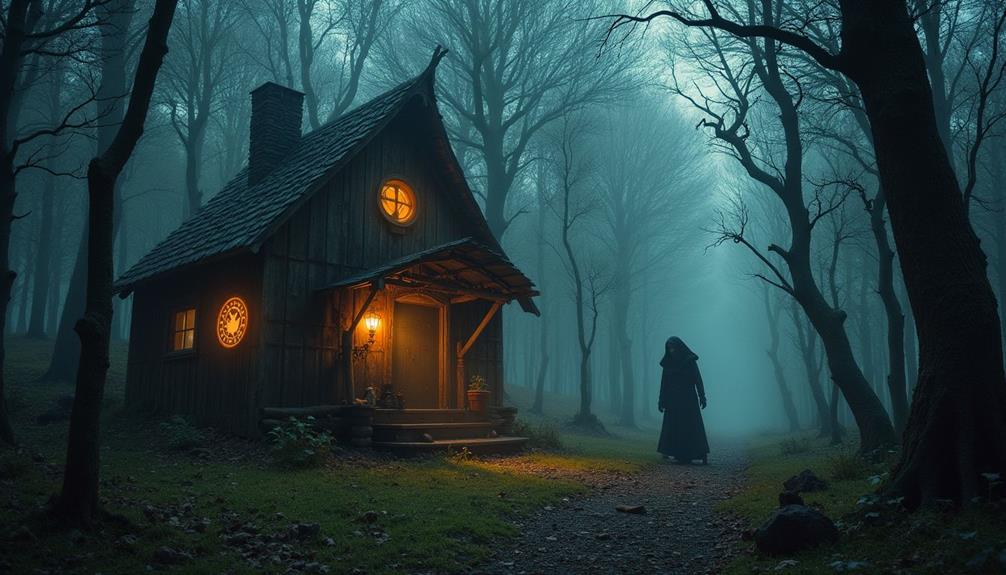
Baba Yaga’s origins are deeply rooted in Slavic folklore, where she emerges as one of the most enigmatic and multifaceted figures. When you investigate these ancient stories, you’ll find that she embodies a blend of mythical creatures and supernatural elements, making her a central figure of cultural significance.
Baba Yaga isn’t just a single character; she represents a powerful female archetype that transcends simple categorization.
In the tales, Baba Yaga’s presence is often intertwined with narrative themes that explore the balance between good and evil, life and death, and the mystical and the mundane. These stories offer more than just entertainment; they convey ancestral wisdom and moral lessons that have been passed down through generations.
Her character teaches about the complexities of human nature and the importance of respecting natural forces.
As you examine her stories, you’ll see how Baba Yaga’s role shifts based on the moral landscape of each tale, sometimes acting as a benevolent guide and other times as a formidable adversary.
This duality adds depth to her character and highlights the rich tapestry of Slavic folklore.
Baba Yaga’s Appearance

Shrouded in mystery and fear, the appearance of Baba Yaga is as enchanting as her tales. When you first hear about Baba Yaga, her characteristics paint a vivid, unsettling picture.
Picture her as a crone with a gaunt frame, her bony limbs poking out from tattered, mismatched layers of clothing. Her nose, long and crooked, juts out like a beak, adding to her eerie visage. Her eyes, piercing and cold, seem to see right through you, revealing hidden truths and dark secrets.
Baba Yaga’s attire is far from ordinary. She dons patchwork garments, each piece a remnant of her countless encounters and adventures. Her dress, a chaotic mix of colors and textures, reflects her unpredictable nature.
Often, she wraps herself in a shawl that looks as ancient and weathered as the forests she inhabits. This shawl, tattered and frayed, only adds to her mystique.
Every detail of Baba Yaga’s appearance serves a purpose, a visual representation of her role as both a feared witch and a wise, enigmatic figure. You’re left wondering whether to fear her or seek her wisdom.
The Hut on Chicken Legs

A sense of wonder and unease surrounds the legendary hut on chicken legs. Imagine stumbling upon this peculiar sight deep in the forest. The hut, perched on giant chicken legs, can move at will, turning and shifting like a living creature. This magical architecture isn’t just whimsical; it holds profound folklore symbolism. The hut embodies the unpredictable nature of Baba Yaga herself, making it both a place of refuge and a source of danger.
You might find it standing still or suddenly see it strutting through the trees, its legs leaving deep imprints in the ground. The hut’s ability to move symbolizes the fluid boundary between the mundane and the magical domains. It challenges you to question reality and prepares you for the unexpected.
Entering this hut isn’t a simple task. Traditional tales often mention that you must chant a specific incantation to make it lower itself, allowing you to step inside. This ritual underscores the idea that not everything in Baba Yaga’s territory is accessible without understanding its rules.
The hut on chicken legs serves as a guardian to the mysteries within, reminding you that in folklore, even the architecture is alive with meaning.
Tales of Terror and Wisdom
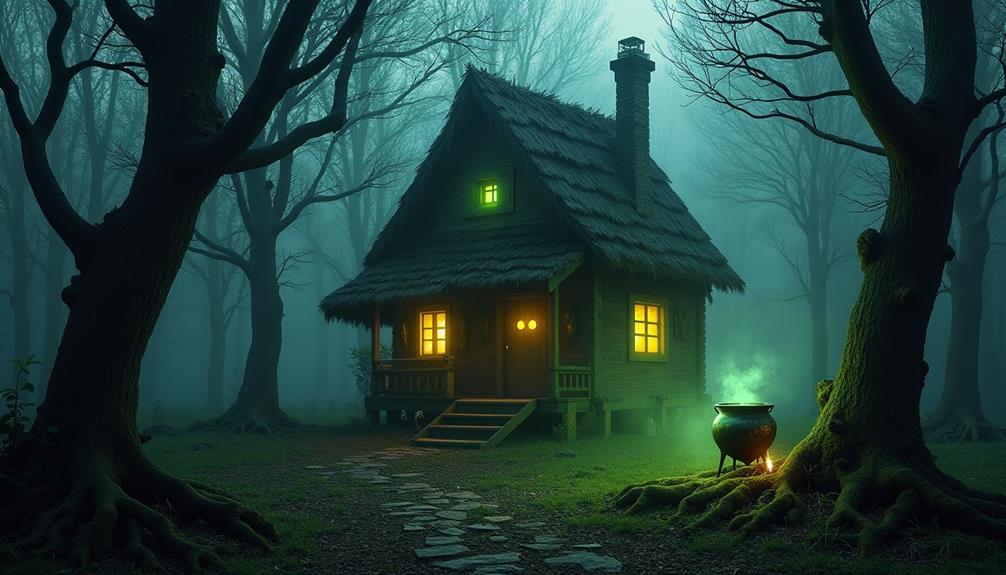
How often have you wondered what lies behind the tales of terror and wisdom that surround Baba Yaga? You’re not alone. These stories are rich with folklore connections, revealing a tapestry of archetypal figures and supernatural elements.
Baba Yaga embodies moral complexity, straddling the line between benevolent guide and malevolent force. In many cultural interpretations, she serves as both a harbinger of doom and a dispenser of wisdom. Her dual nature commands fear and respect, making her a figure of deep intrigue.
Baba Yaga’s tales often challenge traditional gender roles, presenting a powerful female figure who defies societal norms. Nature’s power is another recurring theme. Baba Yaga’s hut on chicken legs is more than a quirky dwelling; it symbolizes her dominion over the natural world and its unpredictable forces.
Her connection to nature amplifies her mystique and reinforces the idea that she operates beyond human understanding. These stories don’t just scare; they teach. They compel you to confront your fears and respect the unknown.
As you explore Baba Yaga’s world, you’ll find that her tales are as enlightening as they’re terrifying.
Baba Yaga as a Guardian
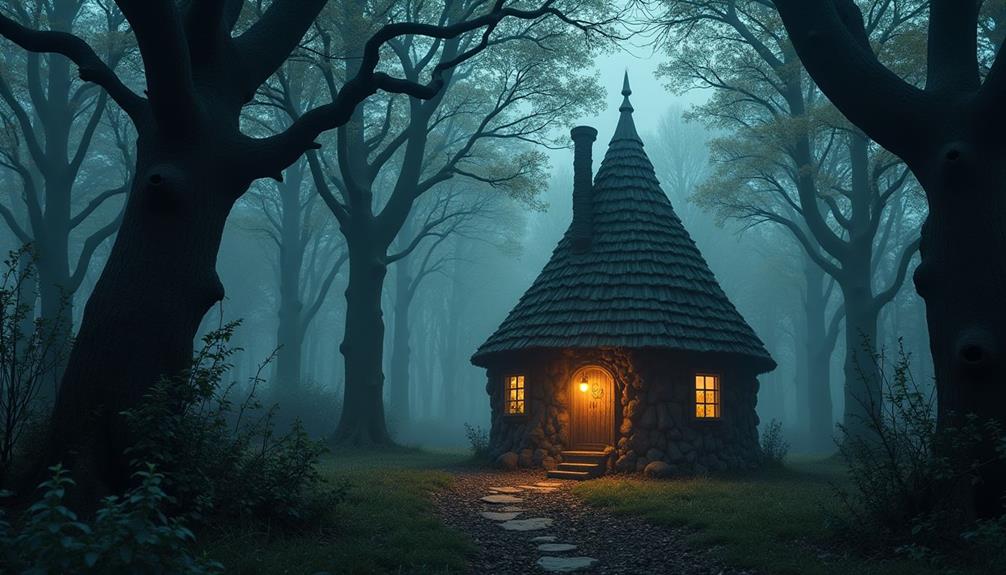
While Baba Yaga is often depicted as a terrifying figure, she also serves an essential role as a guardian. In Russian folklore, Baba Yaga’s duality is evident. On the one hand, she’s a fearsome witch who lives in a hut that stands on chicken legs, ready to devour those who dare approach.
On the other hand, she embodies the Guardian archetype, protecting the natural world and imparting wisdom to those who prove themselves worthy.
You might find it surprising that Baba Yaga, with all her intimidating traits, can be a source of guidance. She’s a gatekeeper between the human and supernatural domains, testing the courage and integrity of those who seek her out. If you show bravery and sincerity, she can offer invaluable advice or magical aid, guiding you through life’s challenges.
Baba Yaga’s duality makes her a complex character, blending the terrifying and the protective. This dual nature reflects the balance of good and evil, chaos and order, in the world.
Symbolism in Russian Culture
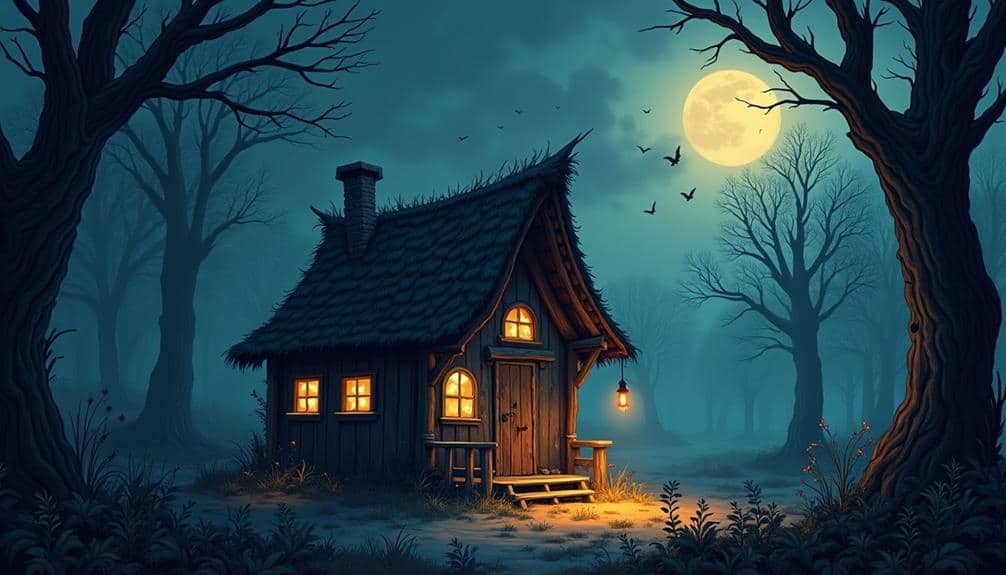
Symbolism plays a profound role in Russian culture, deeply intertwined with its folklore and traditions. You’ll find that figures like Baba Yaga aren’t just characters; they’re rich in mythological significance. Baba Yaga embodies the feminine archetype, representing both nurturing and destructive forces, reflecting cultural duality. This duality showcases how Russian folklore embraces moral ambiguity, allowing characters to possess both good and evil traits.
Folklore representation of Baba Yaga also taps into magical realism, where the supernatural seamlessly blends with the real world, making the stories enchanting and thought-provoking. You can see her as a keeper of ancestral wisdom, possessing knowledge that’s both ancient and powerful. This wisdom often serves as a guide for those who seek her out, symbolizing the importance of learning from the past.
Nature symbolism is another critical aspect. Baba Yaga’s association with the forest highlights the deep connection between humans and nature in Russian culture. Her hut on chicken legs, mobile and enigmatic, adds to her mystique while emphasizing the ever-changing aspect of nature.
Consequently, through Baba Yaga, Russian culture weaves a tapestry rich in symbolic meaning, blending folklore with deeper truths.
Baba Yaga in Modern Media
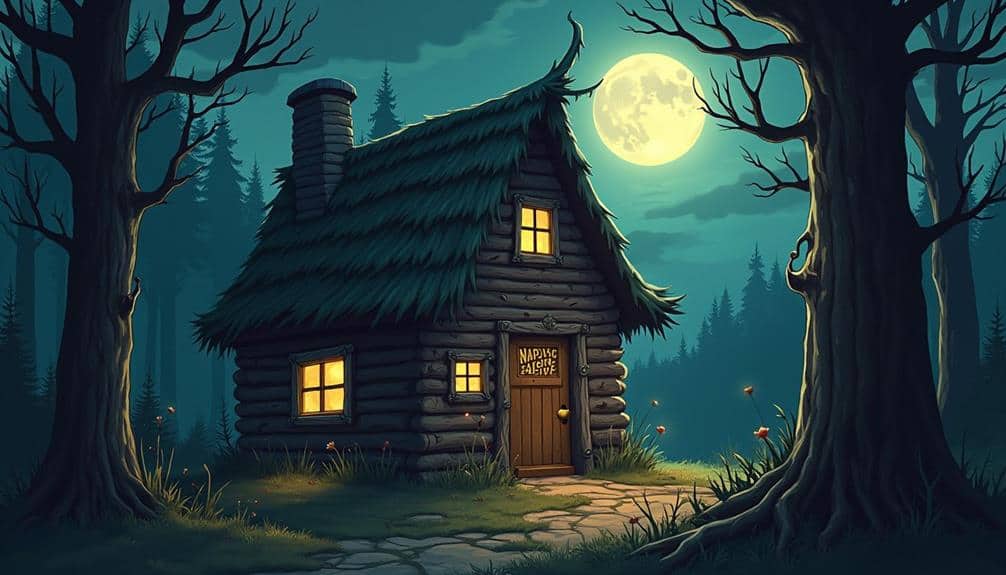
In today’s media landscape, Baba Yaga has found a prominent place, enthralling audiences with her enigmatic presence. You’ve probably noticed her influence across various platforms, from movies and TV shows to video games.
Baba Yaga adaptations often reimagine her as both a fearsome antagonist and a wise, mystical force. These adaptations breathe new life into her character, making her accessible to modern audiences while preserving her ancient roots.
In films like “John Wick,” where she’s referenced as a legendary assassin, or the animated series “The Owl House,” Baba Yaga’s essence is repurposed to fit contemporary narratives. This versatility makes her a compelling figure in modern storytelling.
Beyond screen adaptations, Baba Yaga’s influence extends to Baba Yaga merchandise. You can find everything from action figures to themed apparel celebrating her mystique.
These items not only appeal to folklore enthusiasts but also to pop culture fans who appreciate her unique blend of magic and menace.
Lessons From Baba Yaga
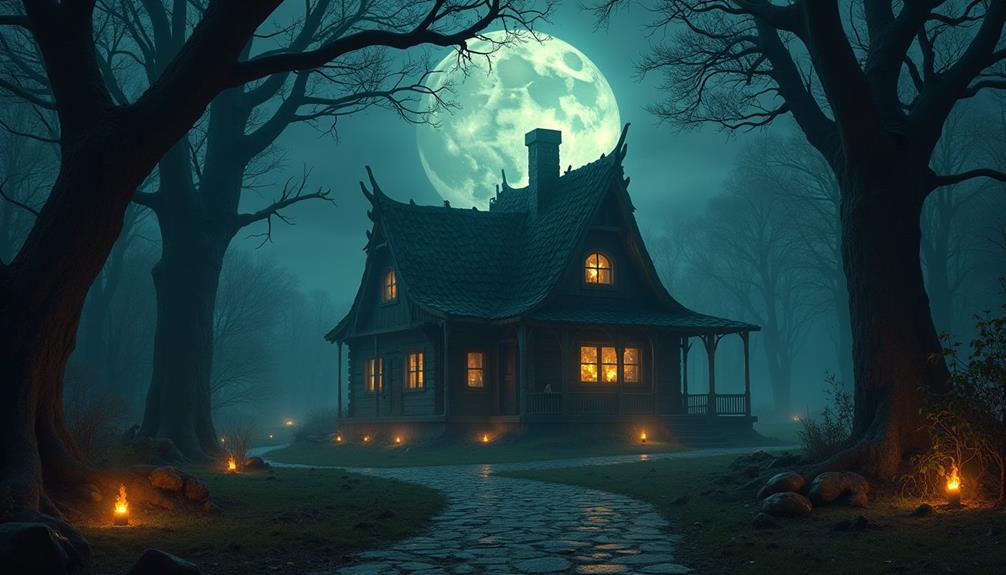
Baba Yaga’s tales offer a trove of timeless lessons that resonate even today. When you explore these stories, you uncover a unique blend of wisdom and caution.
Baba Yaga’s morality isn’t black and white; it reveals the complexities of human nature. She can be a terrifying witch or a helpful guide, depending on how you approach her. This duality teaches you the importance of respect and understanding in your interactions.
Cultural interpretations of Baba Yaga vary, but one common thread is the emphasis on personal growth. You often see characters who encounter Baba Yaga undergo significant transformations. These stories remind you that challenges can lead to self-discovery and improvement. They encourage you to face your fears and embrace change.
Additionally, Baba Yaga’s unpredictability highlights the value of resourcefulness. Characters who succeed in her tales are those who think on their feet and adapt to unexpected situations.
This lesson is particularly relevant in today’s fast-paced world, where adaptability is key to success.

